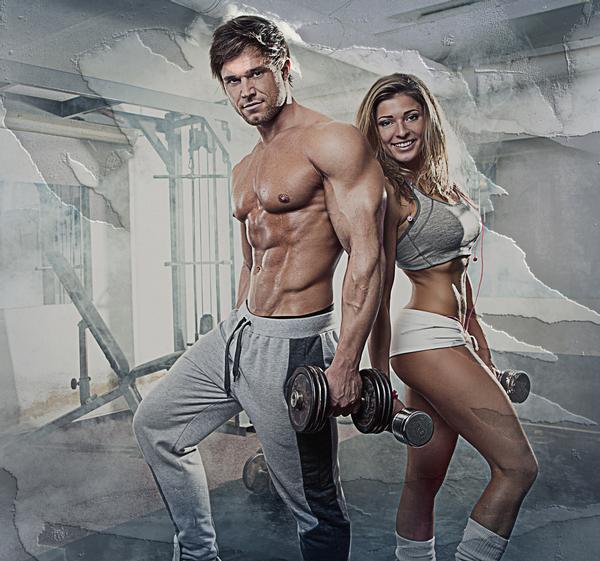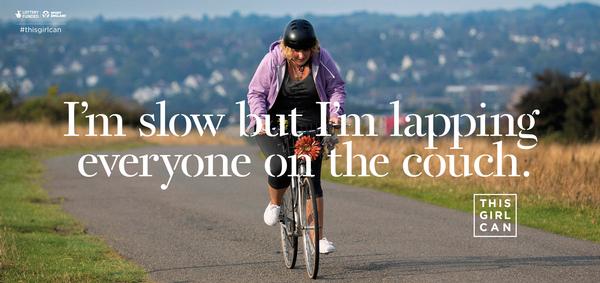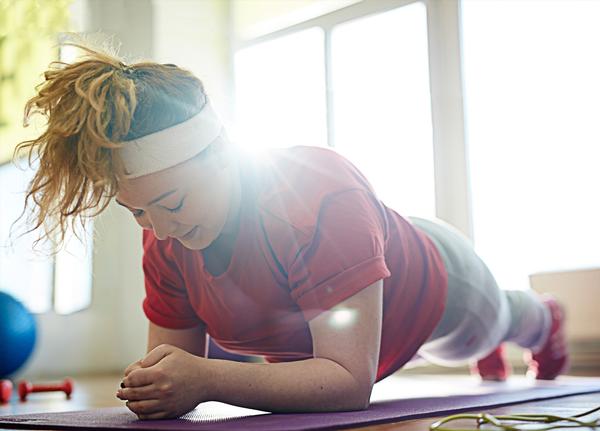



SELECTED
ISSUE
|
|
Leisure Management - Picture perfect

Talking point

|
|
| Picture perfect
|

Whittled waists and bulging biceps often take centre stage in gym marketing, yet in reality, few people have such physiques. Kath Hudson starts a discussion about the impact this has on the reputation of our industry and the mental health of gym members
|

Marketing materials with images of perfectly sculpted models may intimidate potential gym members shutterstock
|
|
|
The fitness industry has voiced a desire to widen the appeal of gyms in order to bring in different audiences and demographic groups. It has launched numerous initiatives to achieve this aim. Yet, take a look at the marketing materials used by health clubs and you’re likely to see images of svelte women with shiny ponytails and perfect skin, or ripped, handsome men. Many people have preconceived ideas about what gyms are like and often feel certain that they won’t fit in. Unfortunately, the current imagery used by clubs seems to support gym stereotypes. In this respect, Sport England’s This Girl Can campaign has been a breath of fresh air and has mobilised 2.8m women. In fairness, it’s not just the health and fitness industry that’s guilty of using unrealistic models in its marketing. But as an industry that promotes good health, should more operators be focused on images that show realistically achievable physiques rather than unattainable levels of perfection? Or is using real people a risky strategy that’s likely to destroy the aspirational element of fitness?
|
|
 |

Matt Cresswell
Director
New Energy Fitness and New Energy Yoga
 |
|
I think the fitness industry has evolved in so many exciting ways in recent years but, for the most part, the marketing seems stuck in the past. Stock imagery of beautiful, muscular, perfect-looking people can be very disenchanting and actually quite intimidating for many gym users. The modern consumer is also a lot more savvy about marketing: they see through this type of stock imagery and it makes the business seem generic, lazy and lacking in authenticity.
I can understand the argument that such images can be inspirational for those whose goal is to be a bodybuilder or a fitness model, but this isn’t why the majority of people go to the gym, nor is it a realistic goal for them. In many cases it can further entrench a mindset that puts people off exercise before they get started: they feel they aren’t fit enough to belong in a gym environment.
At New Energy, we want our clients to be able to relate to our marketing material, to be able to see something of themselves in it, and to feel reassured that our gym is full of normal people, just like them. For that reason, we don’t use fitness models in our images and instead use real-life gym-goers.
The New Energy approach to marketing has helped us to stand out from the local competition. We’ve attracted a lot of clients who say they had never seen themselves going to a gym before and they were pleasantly surprised when their experiences didn’t match their preconceived ideas of what a gym would be like.
“It can further entrench a mindset that puts people off exercise before they get started: they feel they aren’t fit enough to belong in a gym environment”
|
|
 |

Jenny Cromack
Personal Training Director
Motive8
 |
|
It’s good to start the conversation because the industry needs to make sure it has a broad enough approach to reach out to everyone – not just those people who are already in good shape.
However, I think the imagery used should depend on the target market. An operator like Gold’s Gym has a very different audience to a multi-generational provider, and the choice of images should vary accordingly.
In a recent website launch, we purposely chose to use pictures of a cross section of clients, who look strong and fit, but not like models. It was a move away from stock images, as we realised this was out of step for our target market, many of whom are 40-something professionals. Showing a picture of a real member boxing with a PT presents a more realistic, and inspirational, image of the club.
The industry should also consider using images that inspire people to take up an activity for reasons other than the physique they perceive to be associated with it. For example, you could show people having fun in a group exercise class or enjoying the outdoors on a bike. ride.
“The imagery used should depend on the target market. An operator like Gold’s Gym has a very different audience to a multi-generational provider, and the choice of images should vary accordingly”
|
|
 |

Kate Dale
Head of Brand and Digital strategy, This Girl Can
Sport England
 |
|
Using perfect-looking people in marketing isn’t a just a fitness industry issue, it’s an endemic problem across marketing as a whole, which simply doesn’t accurately reflect society. However, it’s encouraging to see a shift with some brands, such as ASOS and Missguided, now featuring models of different shapes and sizes.
The insights we have learned through This Girl Can’s research tell us that women who can self-identify with an image are more likely to be inspired by it: seeing themselves represented encourages people to get active. If women see people like themselves exercising in the industry’s marketing, it ignites a confidence that they can become active themselves and helps them overcome the fear of judgement they might experience. Fear of judgement is a common thread we’ve identified as one of the main reasons for the gender gap in physical activity.
Since the This Girl Can campaign launched in 2015, we’ve acted as cheerleaders for 2.8m women who have become active as a result of seeing our brilliant women doing their thing. We’ve brought together a strong and ever-growing community of women who support This Girl Can, which is a fabulous example of girl power at its best.
“Fear of judgement is a common thread we’ve identified through our research as one of the main reasons for the gender gap in physical activity”
| |


|

This Girl Can inspired 2.8m women to get moving |
|
|
 |

Justin Rogers
Creative director
Ten Health & Fitness
 |
|
Our photography reflects our brand, so from my point of view, the most important considerations are that the pictures are well lit, that they are appealing to the eye and that they show what a dynamic reformer pilates class is about. That means the images need to demonstrate expertise, so the people in the pictures need to have good form and technique. As a result, we tend to use our staff in our photo shoots – and not just the instructors, but massage therapists, back-office staff, physios or whoever is available at the time. We’re lucky to have a photogenic team!
We do between 10 and 15 shoots a year and haven’t used models for about three years. In fact, the last time we used a model was for a glossy fashion magazine that wanted images which resonated with their editorial style.
Ultimately, your brand’s values should dictate the kind of imagery used. For instance, 1Rebel and Fierce Grace have similar target markets, but very different brands. Fierce Grace is known for its inclusivity and quirkiness, so typical fitness model casting wouldn’t work. Ten has a similar target market to premium cosmopolitan gym brands, but while such brands may use images of muscly fitness models, that just wouldn’t suit our brand.
“We do between 10 and 15 shoots a year and haven’t used models for about three years”
|
|
 |

Holli Rubin
Founder
Holli Rubin Body Image Specialist
 |
|
I spent five years working in the fashion industry in New York, and the fitness industry is similar in its unrealistic portrayal of how people look. Only a very small number of people look like the photos routinely used by either the fashion or the fitness industries.
I think that body image problems are on the rise. That’s partly because people are now more prepared to discuss how they feel about their bodies, but also because the advent of social media has made the situation even more challenging, given the constant bombardment of unrealistic imagery.
It’s true that some people may find images of svelte girls and heavily muscled men aspirational and will be motivated to join the gym. However, for so many, this will turn to disillusionment when they discover that so few people can attain that body shape. Also, I believe such imagery is alienating to many who believe they don’t look right and conclude that the gym is not for them.
It’s time the industry moved away from this type of photography so a wider range of people can see themselves represented.
The message gyms need to put across is for people to feel comfortable in their own skin, rather than aspire to look like someone different. It is important to create an authentic picture, not a photoshopped world, and for people to be incentivised to become active with the emphasis placed on the physical and mental wellbeing aspects of exercise, rather than focusing on weight loss.
“The message gyms need to put across is for people to feel comfortable in their own skin, rather than aspire to look like someone different”
| |


|

Gyms could focus more on images that show the physical and mental benefits of exercise, rather than weight loss |
|
|
 |
| Originally published in Health Club Management 2018 issue 1
|
|
 |
|
